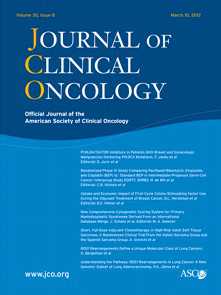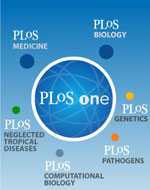JCO:他莫昔芬可降低患浸润性乳腺癌的风险(NSABP B-24研究)
2012-03-16 MedSci MedSci原创
3月5日,国际著名杂志Journal of Clinical Oncology杂志在线刊登了国外研究人员的最新研究成果“Adjuvant Tamoxifen Reduces Subsequent Breast Cancer in Women With Estrogen Receptor–Positive Ductal Carcinoma in Situ: A Study Based on NSAB
3月5日,国际著名杂志Journal of Clinical Oncology杂志在线刊登了国外研究人员的最新研究成果“Adjuvant Tamoxifen Reduces Subsequent Breast Cancer in Women With Estrogen Receptor–Positive Ductal Carcinoma in Situ: A Study Based on NSABP Protocol B-24 ”,文章中,研究结果显示,导管原位癌(DCIS)的妇女经过肿瘤切除术和放疗后,他莫昔芬可降低患浸润性乳腺癌的风险,但是对于降低同侧风险,只对雌激素受体(ER)受体阳性的患者有效。
对于ER阴性的患者,没有观察到同侧效益,表明他莫昔芬对残余肿瘤细胞发挥作用和ER状态是有关的。
D. Craig Allred博士等解释到,全国乳腺和肠外科辅助项目B-24临床试验(NSABP B-24),表明DCIS标准治疗后,辅助他莫昔芬治疗可降低同侧和对侧的乳腺癌发生率,这个试验是在对DCIS实行激素受体状态常规检测之前开始的。
目前的研究是对参与732名参与者的结局进行分析,她们的受体状态可以追溯确认。76%雌激素受体阳性,66%孕激素受体阳性。
研究人员发现,与安慰剂组相比,辅助他莫昔芬治疗,ER阳性的DCIS病人10年同侧乳腺癌风险明显降低(HR,0.49;p<0.001),ER阴性的DCISS病人同侧效应不明显(HR,1.06;p=0.87)。分析表明,不管雌激素受体状态如何,他莫昔芬对于对侧乳腺癌发展都有预防作用。
纪念斯隆 - 凯特琳癌症中心的Monica Morrow博士,对该研究进行述评说到,该研究使我们能够更详细的确认DCIS亚组人群,这组人群能够通过他莫昔芬治疗获得最大的效益,即,双侧乳腺都具有高风险、ER阳性的DCIS的绝经前妇女。
她还指出,NSABP B-24是一个比较旧的临床试验,对于绝经后的DCIS女性,降低其乳腺癌风险有其他选择,例如,依西美坦(Aromasin),是可替代他莫昔芬针对绝经后的DCIS女性的一种药物。

doi:10.1200/JCO.2010.34.0141
Adjuvant Tamoxifen Reduces Subsequent Breast Cancer in Women With Estrogen Receptor–Positive Ductal Carcinoma in Situ: A Study Based on NSABP Protocol B-24
D. Craig Allred⇓, Stewart J. Anderson, Soonmyung Paik, D. Lawrence Wickerham, Iris D. Nagtegaal, Sandra M. Swain, Elefetherios P. Mamounas, Thomas B. Julian, Charles E. Geyer Jr, Joseph P. Costantino, Stephanie R. Land and Norman Wolmark
Purpose The NSABP (National Surgical Adjuvant Breast and Bowel Project) B-24 study demonstrated significant benefit with adjuvant tamoxifen in patients with ductal carcinoma in situ (DCIS) after lumpectomy and radiation. Patients were enrolled without knowledge of hormone receptor status. The current study retrospectively evaluated the relationship between receptors and response to tamoxifen.
Patients and Methods Estrogen (ER) and progesterone receptors (PgR) were evaluated in 732 patients with DCIS (41% of original study population). An experienced central laboratory determined receptor status in all patient cases with available paraffin blocks (n = 449) by immunohistochemistry (IHC) using comprehensively validated assays.
Results for additional patients (n = 283) determined by various methods (primarily IHC) were available from enrolling institutions. Combined results were evaluated for benefit of tamoxifen by receptor status at 10 years and overall follow-up (median, 14.5 years). Results ER was positive in 76% of patients. Patients with ER-positive DCIS treated with tamoxifen (v placebo) showed significant decreases in subsequent breast cancer at 10 years (hazard ratio [HR], 0.49; P < .001) and overall follow-up (HR, 0.60; P = .003), which remained significant in multivariable analysis (overall HR, 0.64; P = .003). Results were similar, but less significant, when subsequent ipsilateral and contralateral, invasive and noninvasive, breast cancers were considered separately. No significant benefit was observed in ER-negative DCIS. PgR and either receptor were positive in 66% and 79% of patients, respectively, and in general, neither was more predictive than ER alone.
Conclusion Patients in NSABP B-24 with ER-positive DCIS receiving adjuvant tamoxifen after standard therapy showed significant reductions in subsequent breast cancer. The use of adjuvant tamoxifen should be considered for patients with DCIS.
本网站所有内容来源注明为“梅斯医学”或“MedSci原创”的文字、图片和音视频资料,版权均属于梅斯医学所有。非经授权,任何媒体、网站或个人不得转载,授权转载时须注明来源为“梅斯医学”。其它来源的文章系转载文章,或“梅斯号”自媒体发布的文章,仅系出于传递更多信息之目的,本站仅负责审核内容合规,其内容不代表本站立场,本站不负责内容的准确性和版权。如果存在侵权、或不希望被转载的媒体或个人可与我们联系,我们将立即进行删除处理。
在此留言










#JCO#
68
#ABP#
48
#他莫昔芬#
71
#浸润性乳腺癌#
61